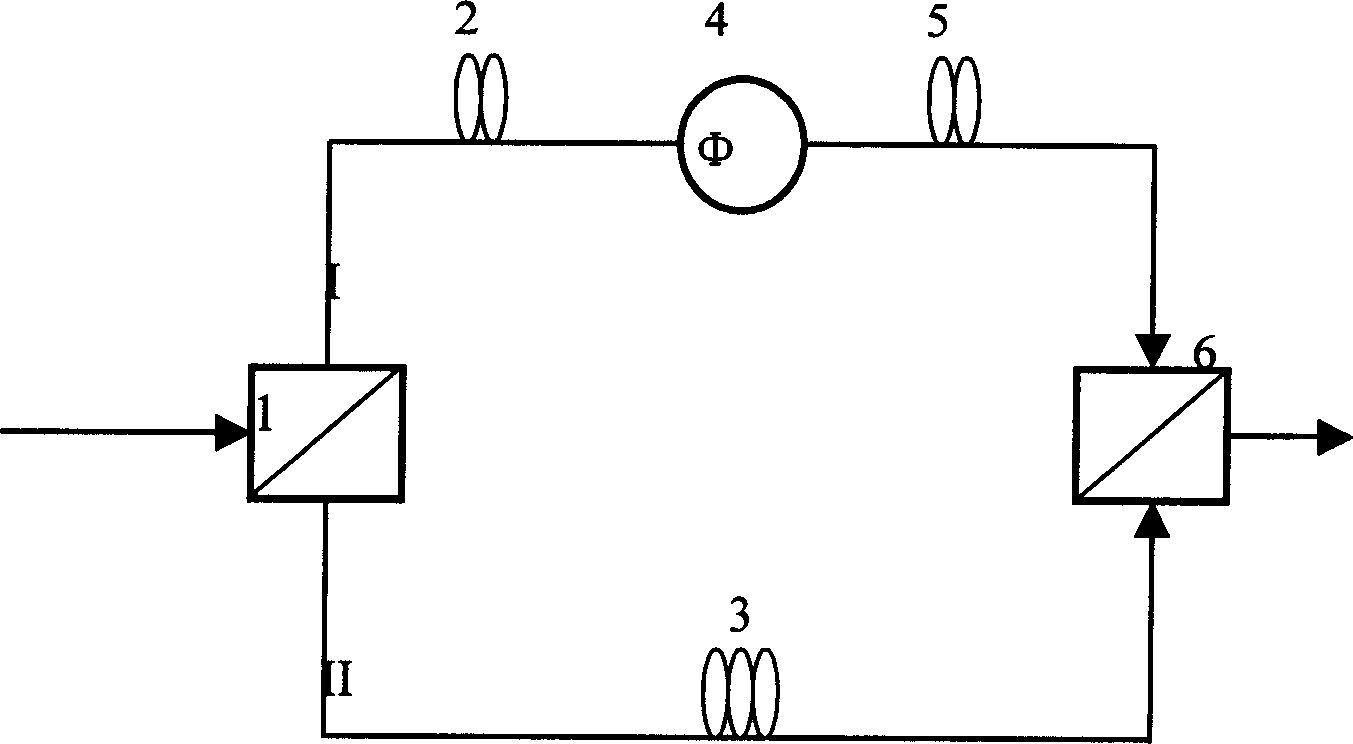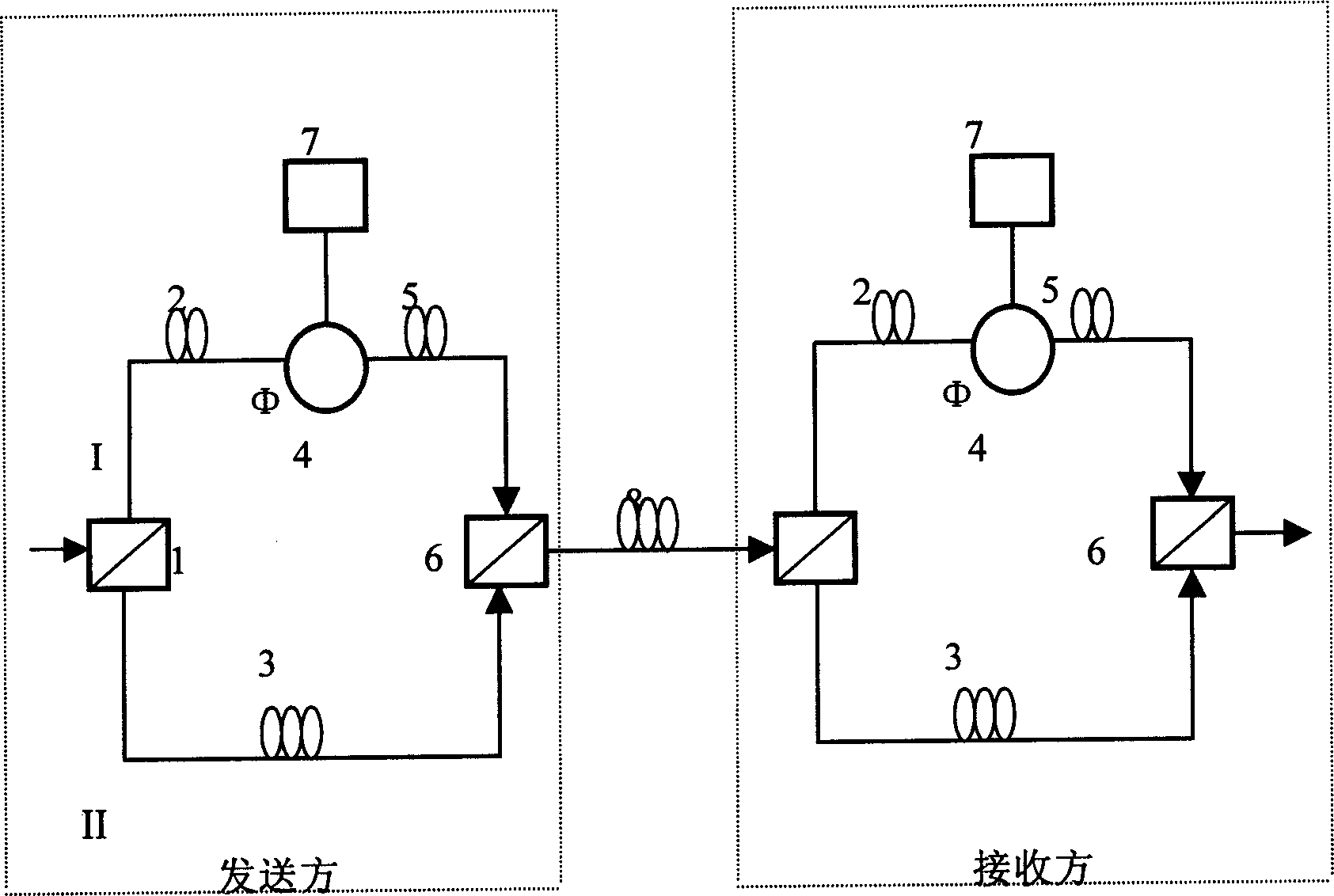Quantum encoder whose polarization state is modulated by phase and decoder and its application
A phase modulator and quantum encoding technology, applied in the field of polarization compensation, can solve problems such as difficulty in high-speed encoding, halving of efficiency, and difficulty in generating entangled photons
- Summary
- Abstract
- Description
- Claims
- Application Information
AI Technical Summary
Problems solved by technology
Method used
Image
Examples
Embodiment 1
[0038] Embodiment 1: Carry out quantum cryptography communication of BB84 protocol with four-state quantum encoder and decoder
[0039] For the first time, we have experimentally realized the quantum cryptography communication of the BB84 protocol using the 4-state encoding method of "two linear polarization states plus two circular polarization states". Optical path such as image 3 As shown, the method is as follows: the sender uses a four-state quantum encoder to randomly prepare photons of four non-orthogonal polarization states, and transmits them to the receiver through an optical fiber, and the receiver uses a four-state quantum decoder to randomly generate four groups of non-orthogonal polarization states Polarization state measurement base, which detects the four non-orthogonal polarization state photons sent by the sender. When a photon is detected, the receiver sends the measurement base used to the sender through a public channel, and the sender tells the receiver ...
Embodiment 2
[0040] Embodiment 2: Use a six-state quantum encoder and a decoder to perform six-state encoded quantum cryptography communication.
[0041] For the first time, we have carried out six-state quantum cryptography communication with six-state encoding, and the optical path is as follows Figure 5 As shown, the sender uses a six-state quantum encoder to randomly prepare photons of six non-orthogonal polarization states, and transmits them to the receiver through an optical fiber, and the receiver uses a six-state quantum decoder to randomly generate six non-orthogonal polarization states for measurement base, to detect the six non-orthogonal polarization state photons sent by the sender. In the case of detecting photons, the receiver sends the measurement base used to the sender through a public channel, and the sender tells the receiver which measurement bases are selected. By the way, then the sender and the receiver keep the corresponding bits when the measurement base is cons...
Embodiment 3
[0042] Embodiment 3: Polarization Compensation by Phase Modulation of Polarization State
[0043] For the first time, we used the method of phase-modulating the polarization state to Figure 4 , Figure 5 The communication line shown has carried out the polarization compensation experiment, and the method is as follows: the sender sends a standard 45° linearly polarized photon to the receiver, and the receiver uses a 135° linear polarization measurement base to detect (according to Table 1, V 1 =V 0 / 2, V 2 =V 0 / 2, can produce this kind of measurement basis), if the polarization state of the photon does not change during the transmission process, then the receiver cannot measure the photon, if the photon depolarizes during the transmission process, for example, it becomes a right-handed ellipse polarized light, then the receiver may measure the photons, at this time, the receiver only needs to change V 1 voltage, making it in Fine-tuning is performed within the range u...
PUM
 Login to View More
Login to View More Abstract
Description
Claims
Application Information
 Login to View More
Login to View More - R&D
- Intellectual Property
- Life Sciences
- Materials
- Tech Scout
- Unparalleled Data Quality
- Higher Quality Content
- 60% Fewer Hallucinations
Browse by: Latest US Patents, China's latest patents, Technical Efficacy Thesaurus, Application Domain, Technology Topic, Popular Technical Reports.
© 2025 PatSnap. All rights reserved.Legal|Privacy policy|Modern Slavery Act Transparency Statement|Sitemap|About US| Contact US: help@patsnap.com



